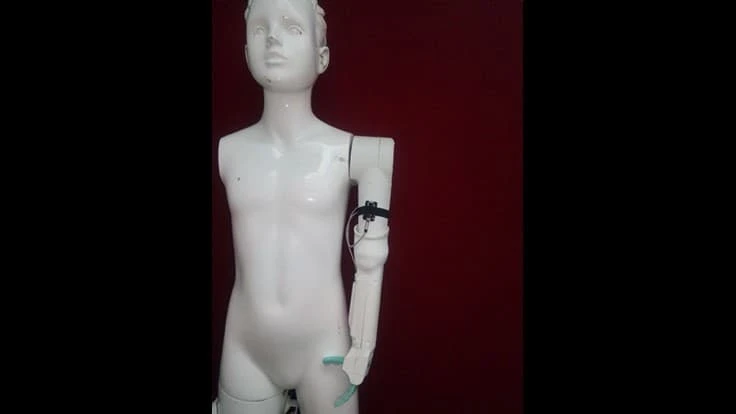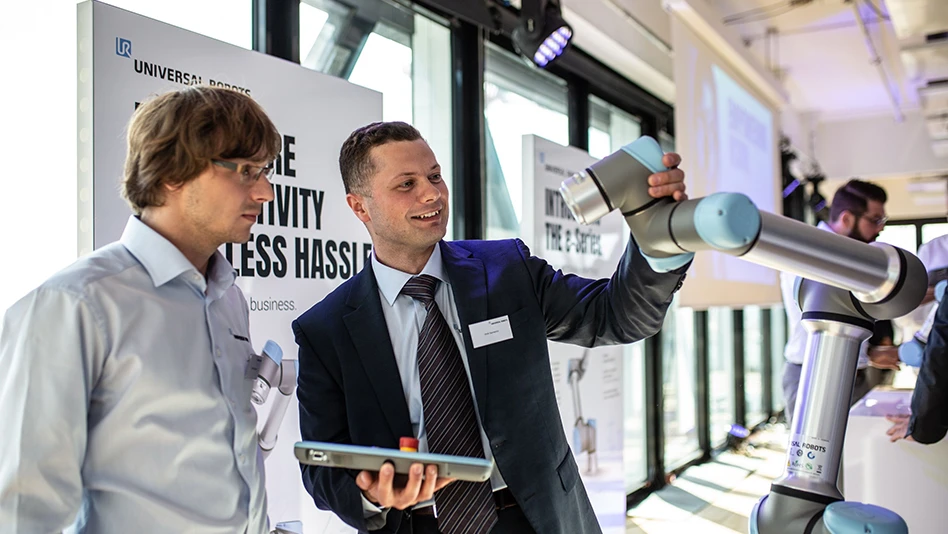
University of Lincoln
The lightweight device with soft grip fingers uses an armband fitted with sensors to detect electrical signals naturally conducted by muscles. This enables the toddler to grip and pick up objects in much the same way as they would with a natural arm.
While muscle-stimulated (myoelectric) prostheses are routinely used by adults, this new smaller device, developed by a team at the University of Lincoln, UK, is the first of its kind to translate the same technology into dimensions suitable for a toddler.
Previously, as well as being expensive to build, producing prosthesis for children under two has been considered problematic as a child's fast growth rates mean that devices would need to be frequently replaced. By using 3D printing, the soft-grasp infant myoelectric prosthetic arm (SIMPA) is less expensive to produce than conventional prosthesis and can be custom made to the individual child's required size without the need for traditional plaster casting techniques.
Another issue with existing prosthetics for children is the high rejection rates. The early fitting of a functional myoelectric device has been shown to reduce this risk, which is something that would be made possible with the use of the new SIMPA device.
Dr. Khaled Goher, senior lecturer in the School of Engineering at the University of Lincoln and the lead engineer on the project, says: "Many traditional active prosthetics are unsuitable for toddlers as they are very time consuming to construct and heavy. Our proposed system would utilize a seven-channel pediatric armband with motion sensors allowing infants to benefit from and become familiar with active prosthetics, with evidence showing that the earlier the exposure, the more likely for the prosthetics to be accepted and used throughout life.
"So far, the device has been tested for grasp force and effectiveness using a range of everyday objects including toys, bottles and building blocks but the next stage of the project is to test the prototype design on toddlers. We are planning to use algorithm training which would utilize games to engage with the toddlers and attune the system to the 'grab' signals from the armband,” Dr Goher adds.
Latest from Today's Medical Developments
- Walter USA unveils new state-of-the-art campus
- Fixtureworks’ manual-style snap clamps
- Cutting Tool Market Report shows orders up from Sept. 2024
- Mahr’s expanded Precimar SM 60 length measurement family
- Prosthetic material could reduce infections from intravenous catheters
- The Okuma GENOS L3000-e MYW Brings Versatility to the Table
- Replace, Repair, or Retrain? | Okuma
- Master Multitasking with the Okuma MULTUS U3000





